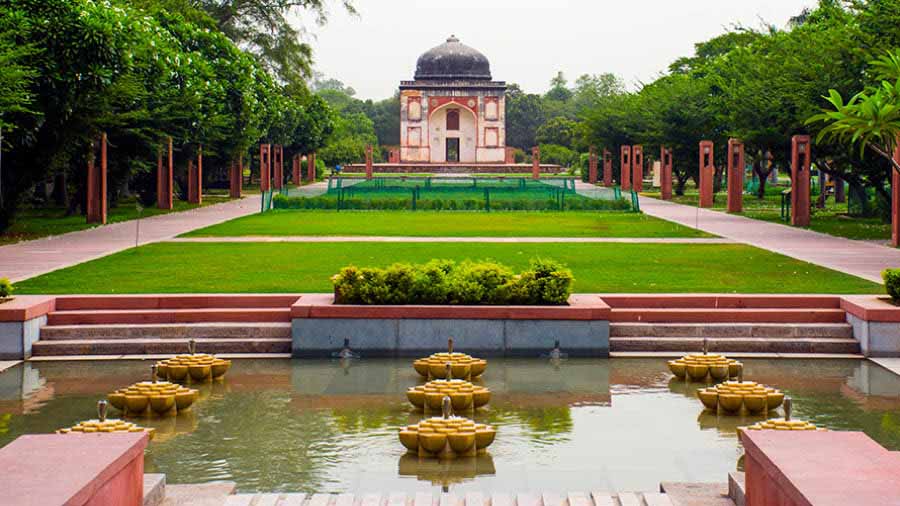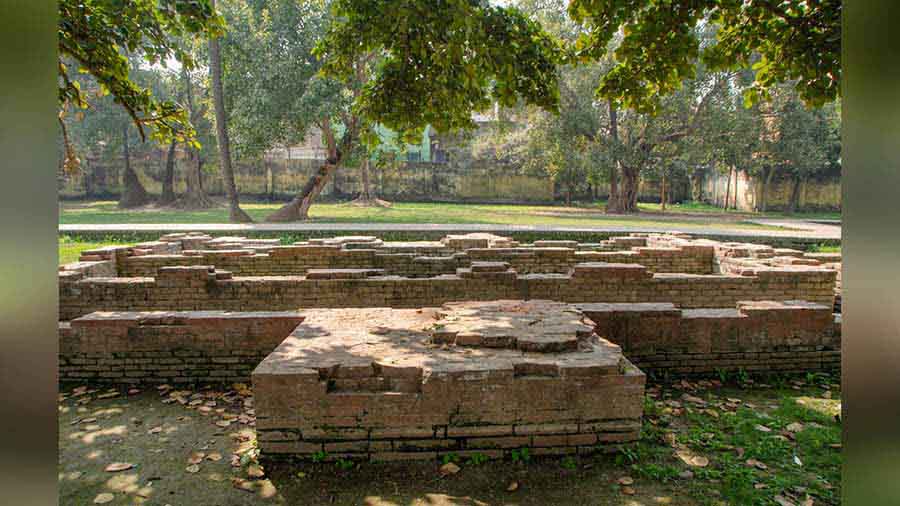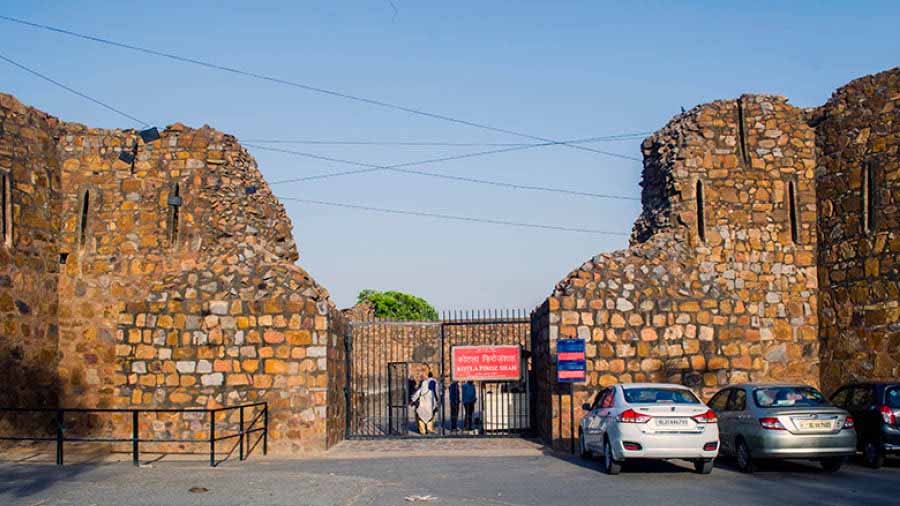Several medieval monuments blend in a garden setting — complete with water bodies, century-old trees and plant nurseries along with performance venues for festivals and concerts — a true urban oasis in the heart of Delhi. This is Sunder Nursery, a 90-acre garden in a natural setting with a unique blend of biodiversity zones and landscaped gardens.
Sunder Nursery attracts a host of visitors with varied interest. They range from nature lovers, fitness enthusiasts and history students to families looking out for a casual day out.

Sunder Burj
The root of Sunder Nursery dates back to the 16th century. It was a Mughal garden known as Azim Bagh and was adjacent to the Humayun Tomb complex. Later, during the early 20th century, Delhi emerged as the capital of British India and was given a new look complete with exotic trees brought from faraway lands. The Azim Bagh served as a nursery for nurturing exotic plants. The nursery was named Sunder Nursery after Sunder Burj, a Mughal-era tomb located on the same premises.
The Sunder Nursery still functions, and is a prime supplier of plants to the public and government offices. With the turn of the new millennium, the Aga Khan Trust for Culture (AKTC) took up the initiative of restoring the landscape, resulting in an urban oasis in the heart of Delhi. The heritage structures are also restored giving them a new lease of life.
Sunder Burj
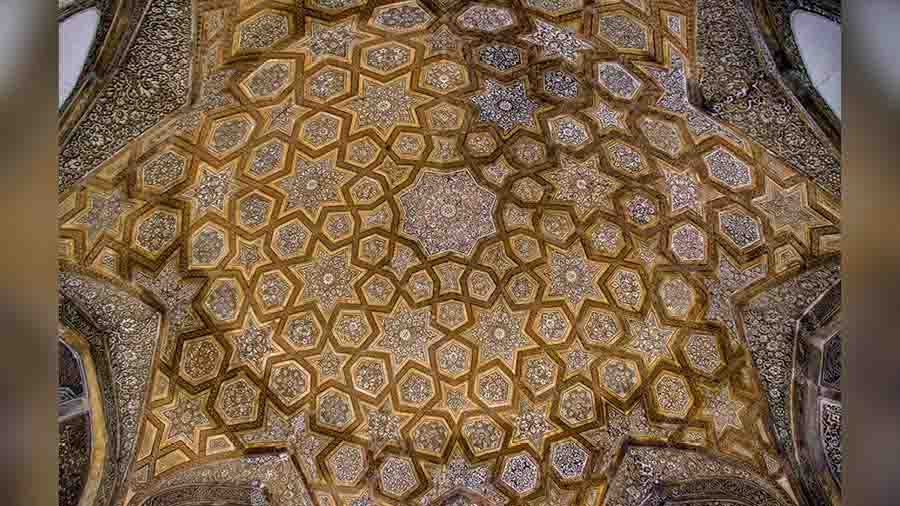
The painted dome of Sunder Burj
It's a Mughal-era domed pavilion known for its intricate incised plasterwork and exotic geometric patterns on the domed ceiling. The interiors contain highly intricate geometric patterns consisting of stars and polygons. The northern side of the pavilion has been turned into a Mughal-styled garden, complete with water channels, fountains and flowerbeds.
Lakkarwala Burj
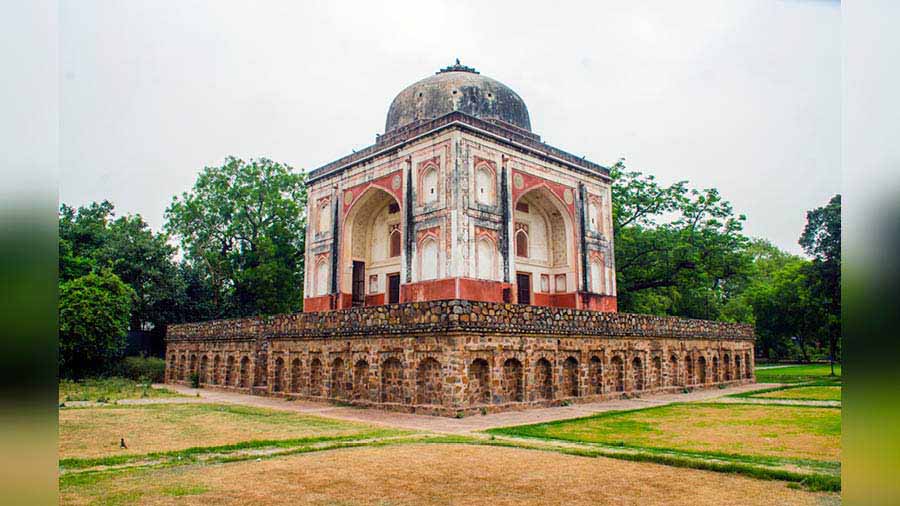
Lakkarwala Burj
This lies on the north west of Sunder Burj and is similar layout but much larger in size and stands on a higher elevated plinth. Nothing much is known about the beautifully restored tomb or about the origin of its name.
Arched Pavilion

Arched Pavilion
The ruined structure, consisting of three arches, stands on the eastern side of Lakkarwala Burj. The rubble-built structure is devoid of any plaster and consists of a central arch flanked with smaller arches on both sides. The structure was probably part of a larger structure that had long collapsed.
Mughal Pavilion
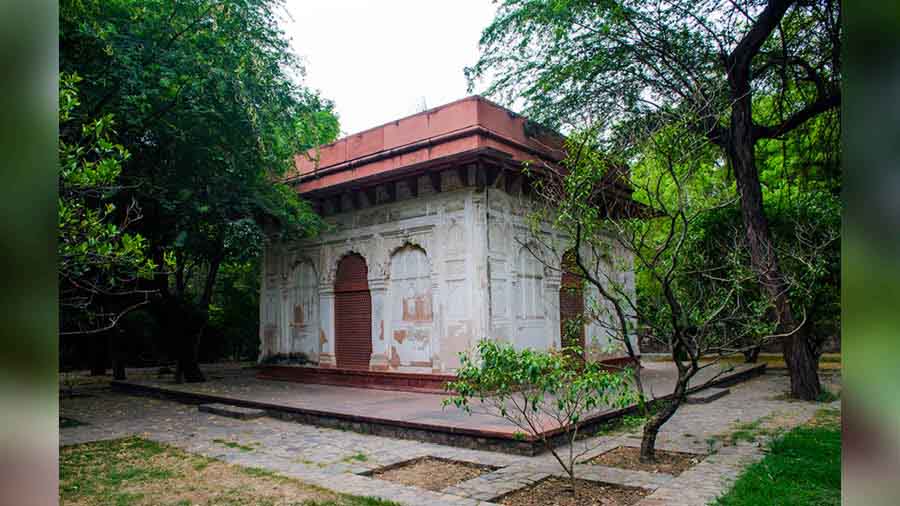
Mughal Pavilion
This lies southeast of the arched pavilion. The small but elegant pavilion dates back to the 17th and 18th century and has a flat roof. The recessed arches and jail screen adds elegance to the small structure standing in the midst of a wooded area.
Sunderwala Mahal
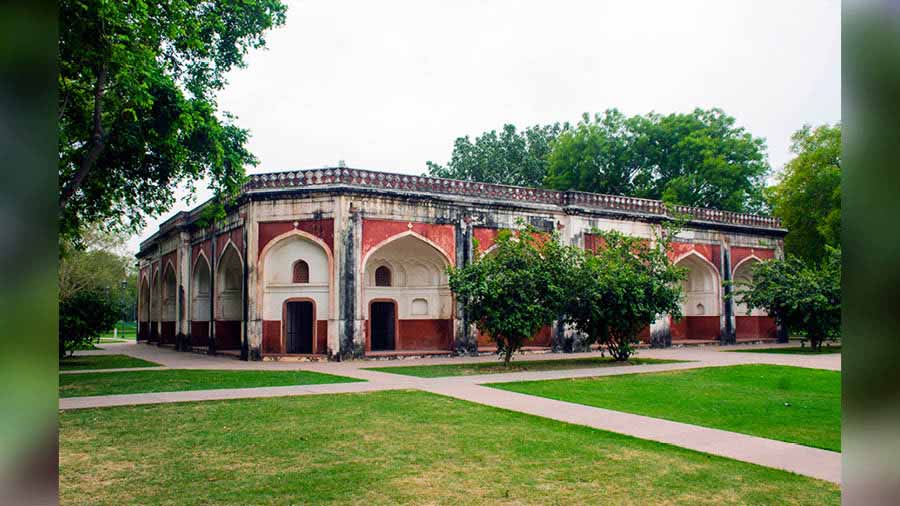
Sunderwala Mahal
This 16th century Mughal-era mausoleum stands on the east of Sunder Burj. Once the Sunder Burj and mahal were part of a walled complex but the walls have long gone. The Sunderwala Mahal is an irregular octagonal structure with the four main sides containing five arches each. Each of the corners consists of a single arch.
Mausoleum of Mirza Muzaffar Hussain
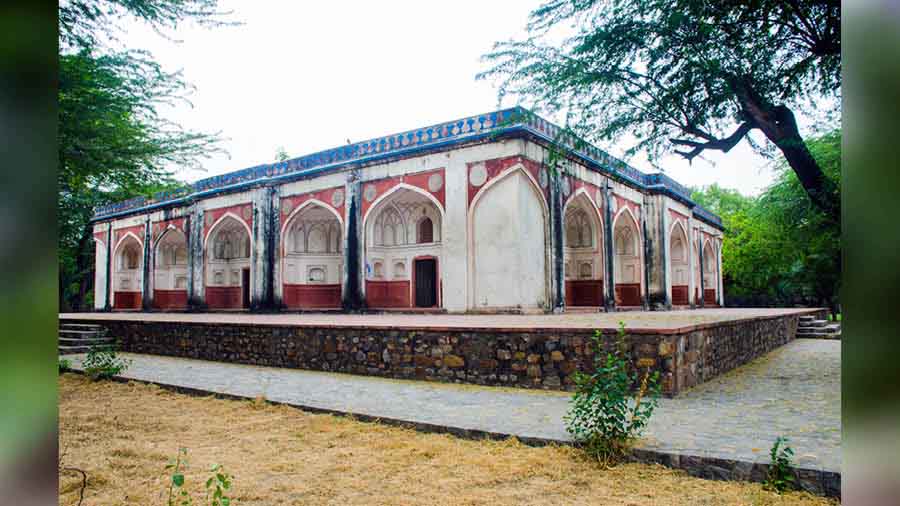
Mausoleum of Mirza Muzaffar Hussain
This lies east of the Sunderwala Mahal and houses the mortal remains of Akbar’s son-in-law. It consists of a square structure with a central crypt. The crypt in turn is surrounded by eight chambers representing the eight folds of Quranic paradise. The real beauty of the tomb lies in its interiors with the walls and ceilings painted with intricate geometric and floral patterns.
Chota Batashewala

Chhota Batashewala
Lying east of the Muzaffar Hussain’s lies the ruined structure of Chota Batashewala. Only two of the eight walls of the octagonal structure stand to this day.
Mughal Mausoleum

Mughal Mausoleum
This lies just east of Chota Batashewala and consists of a square structure standing on a high plinth. It is topped with a huge dome. Sadly nothing is known about the origin of the structure and mortal remains of the persons who are buried underneath it.
But Sunder Nursery is not only about heritage, it also consists of an interesting mix of garden and natural habitat that provides space to about 4,500 trees, 80 species of birds and 40 species of butterflies.
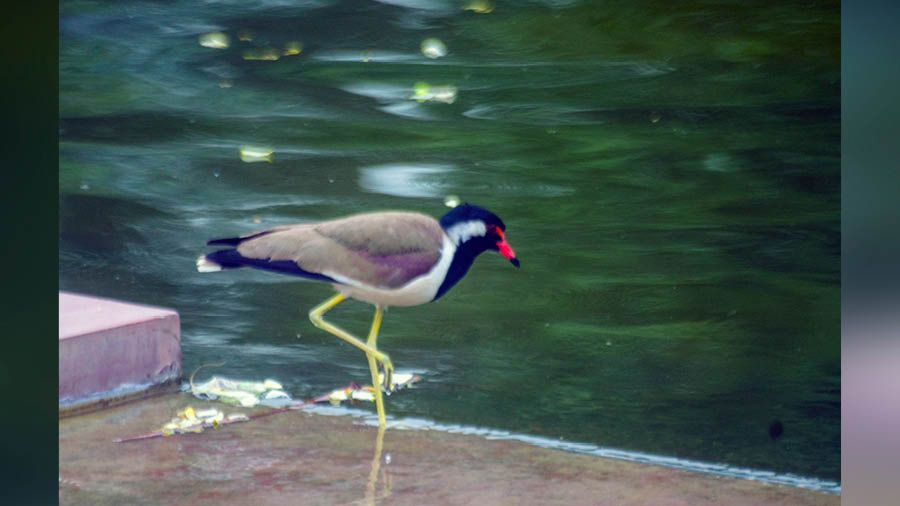
Red-wattle Lapwing
The park is complete with several water bodies, both old and new, beautifully blending with the surrounding lush green lawns and flowerbeds.
Pathways criss-cross the park and bridges span across water channels providing easy access to different areas of the park. Signage provides guides to visitors and elaborate details on the heritage, natural habitats and conservation are put up at every possible location. The park also has a kid's zone providing adventure activities.
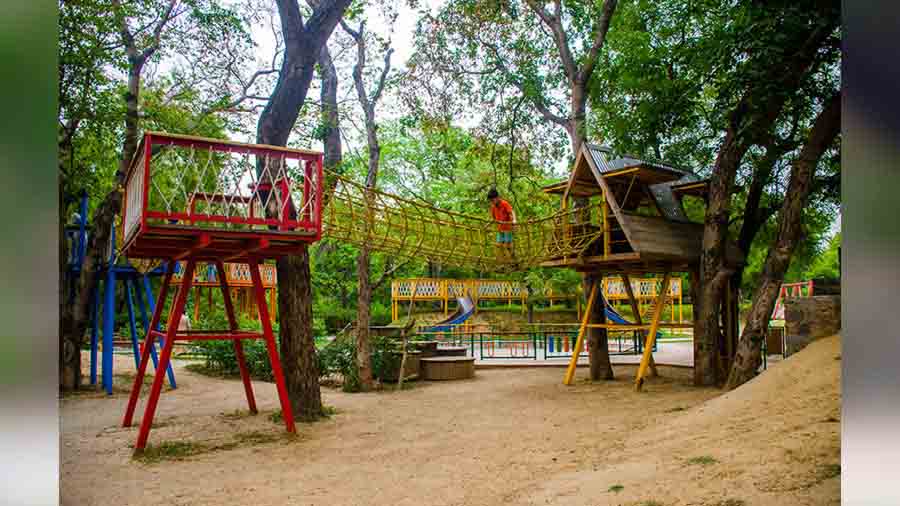
Child activity park
From young couples looking for solitude to nature lovers searching for rare bird species and from a family day-out spot to morning walkers paradise — Sunder Nursery is truly an urban oasis in the heart of Delhi.
Travel Information
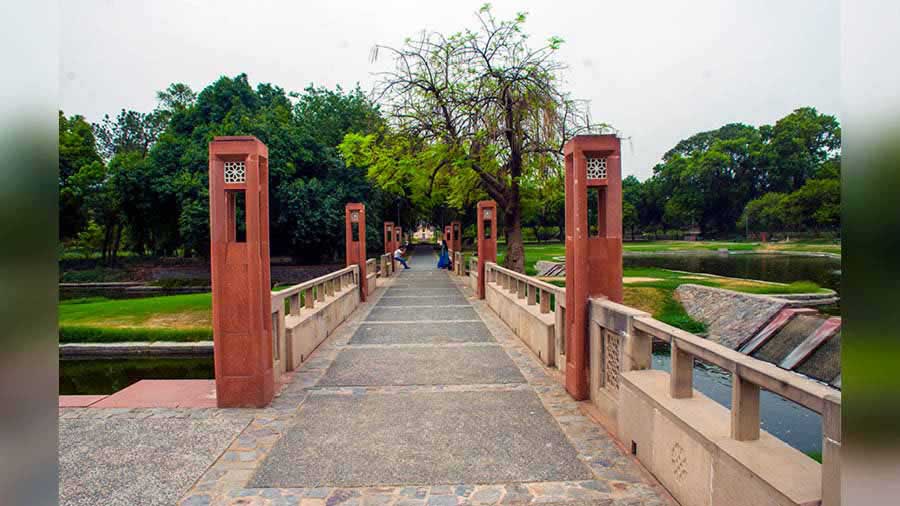
Pathway and bridge, Sunder Nursery
Going there?
- Timings: 7am – 10 pm (entry closes at 9:30 pm)
- Entry fee: ₹50; children between 5 and 12 years - ₹25; children below 5 years - free
